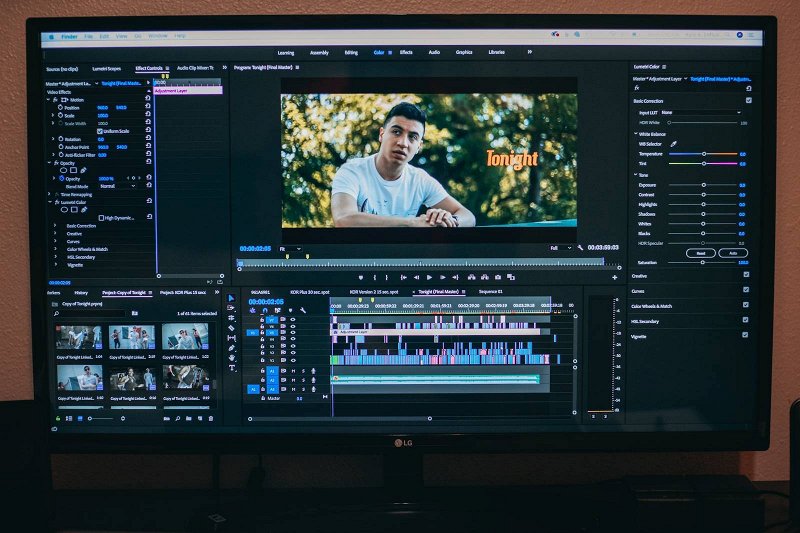Basic Video Editing Terms: Part 1
Find out the video editing terms' meanings in a simple, compact list!

Most common video editing terminology
If you have recently begun to edit videos, most of the terms from online lessons for sure sound like a completely unfamiliar language to you. As a result, they can mix in your head, and instead of understanding what to do, you will have to poke at random functions in the video editor to see what their purpose is, and this can take a lot of time.
However, you don’t have to google new words every time, as we have made a list of terms and definitions used when working with video editors!
To begin with, let’s take a look at the interface elements present in most modern editors.
Most frequent terms and definitions for video editing

The project is the most basic term, and its name shows its purpose. Simply put, this is what you are working on, whether a video or audio project.
Workspace is everything you see when you start or open a project in the video editor. This includes the project timeline, preview window, and other visual elements. Some advanced editors allow customizing the workspace so that it fits your current needs.
Timeline is a layered space in the editor where the initial components of the project (video, audio and other media files) that you are going to edit are placed. Here, you put fragments of the project and arrange them to create a sequence in the precise order they should play in the final result.
Somewhere near the timeline, there might also be zoom sliders that allow you to zoom in or out. Usually, they look like + and – signs, but some editors can use other icons, while on phones you will pinch in or out with your fingers. Zooming is very helpful when you want to see all the elements in large projects or if you need to make a lot of changes to the short part of the audio or video.
The track is a separate line, or a layer, in the timeline, where you add video, audio, images, and captions. On the tracks, all the elements of the project are “glued together”. In many editors, tracks for titles, video, and audio are located separately; if you want, you can hide and unhide them or add a new one.
Clips, also called events, are located on tracks. It may be a link to a fragment of the source file (or the entire file) with a video, audio, or image, or a clip generated by the program itself – titles, color or texture fill, etc. The clip is the main type of object you’re going to work with.
Markers are used to add a comment or other means of highlighting a fragment, making it easier to find a specific one when you have to work on it.
Timecode is an indicator showing the time of a particular moment in the project.
The playhead, which looks like a horizontal line on the timeline, marks the current position in the timeline. You can move it by dragging or by clicking another area in the timeline or one of the fragments.
The preview window is a part of the editor in which you can see how the project currently looks like and play it. In most editors, this window is interactive. For example, if subtitles are present in the video, you can click on them in the preview and change their position.
The playback in the preview window is controlled by the current time indicator (CTI) that shows the current time of the project. When you press play, the preview will begin from the position of the CTI.
In many editors, you can also hover over the interface element and a hint with its name and purpose will appear.
At first, such a number of terms can be confusing, but modern editors have a rather intuitive interface, so everything becomes clear after some time spent working on the project. However, knowing parts of the interface is only a tiny part of the whole video production vocabulary, so it is worth learning other aspects of the editing process as well.



